Garden water saving tips: 11 easy ways to reduce your water usage
These garden water saving tips could help your garden (yes, even your lawn) look better than ever! And you'll be helping the environment too

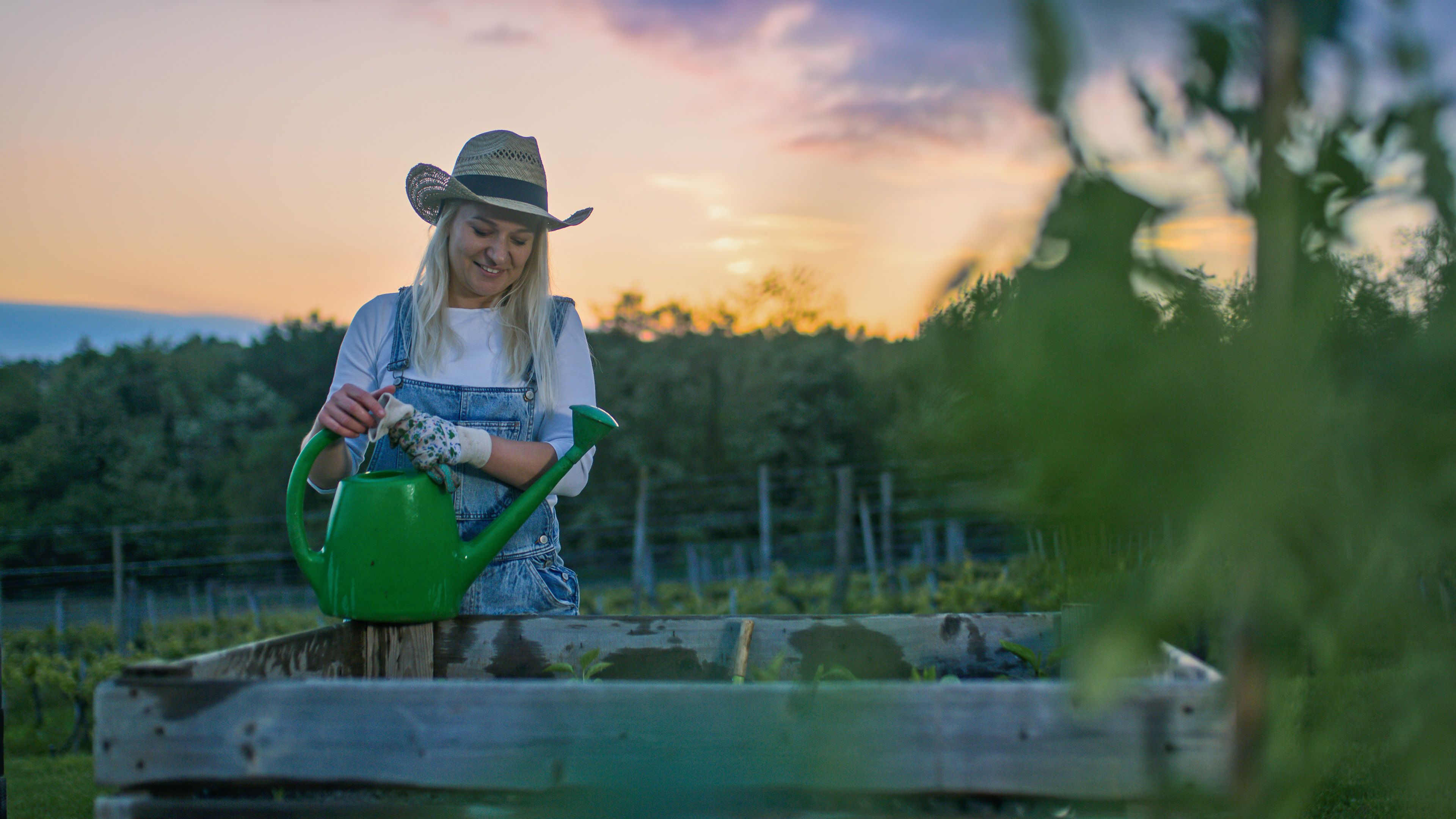
Looking for garden water saving tips to do your bit for the environment? We've put together some easy ways for you save water in the garden this spring, summer and beyond.
If you're a garden enthusiast the chances are that you're already clued up on green issues and have a passion for the environment. Saving water in your garden could not only help the planet, but if you're on a water meter some of these tips will even help save money on your water bill. But surely your garden will suffer as a result? The answer is no, the opposite! But won't the lawn will go brown? No even your lawn can look lush and green with less watering if you follow this simple advice.
When it comes to our gardens, we all want them to look lush and green. And achieving this takes plenty of watering with the best garden hose, right? But there are things that you could be doing to ensure that the water you use in your garden is being put to optimum use. This could be looking at the times of day that you are watering. There's also the plants you are choosing. And finally, where are you getting you water from?
We've put together some helpful tips on how to be more water conscious whilst still having the garden that you want. If you follow our garden water saving tips you can even ensure that your lawn is kept as green as it ever was whilst still saving water.
Why should we follow garden water saving tips?
It's a common misconception that water is an infinite resource as it makes up over 70% of our planet. However most of this is actually sea water. Fresh water makes up just 2.5% of this, with less than 1% of this easily accessible. So, it’s vital we respect the water we do have and treat it as the precious, life-giving commodity that it is.
So why not do your bit for the planet by following our garden water saving tips?
1. Think about your timings
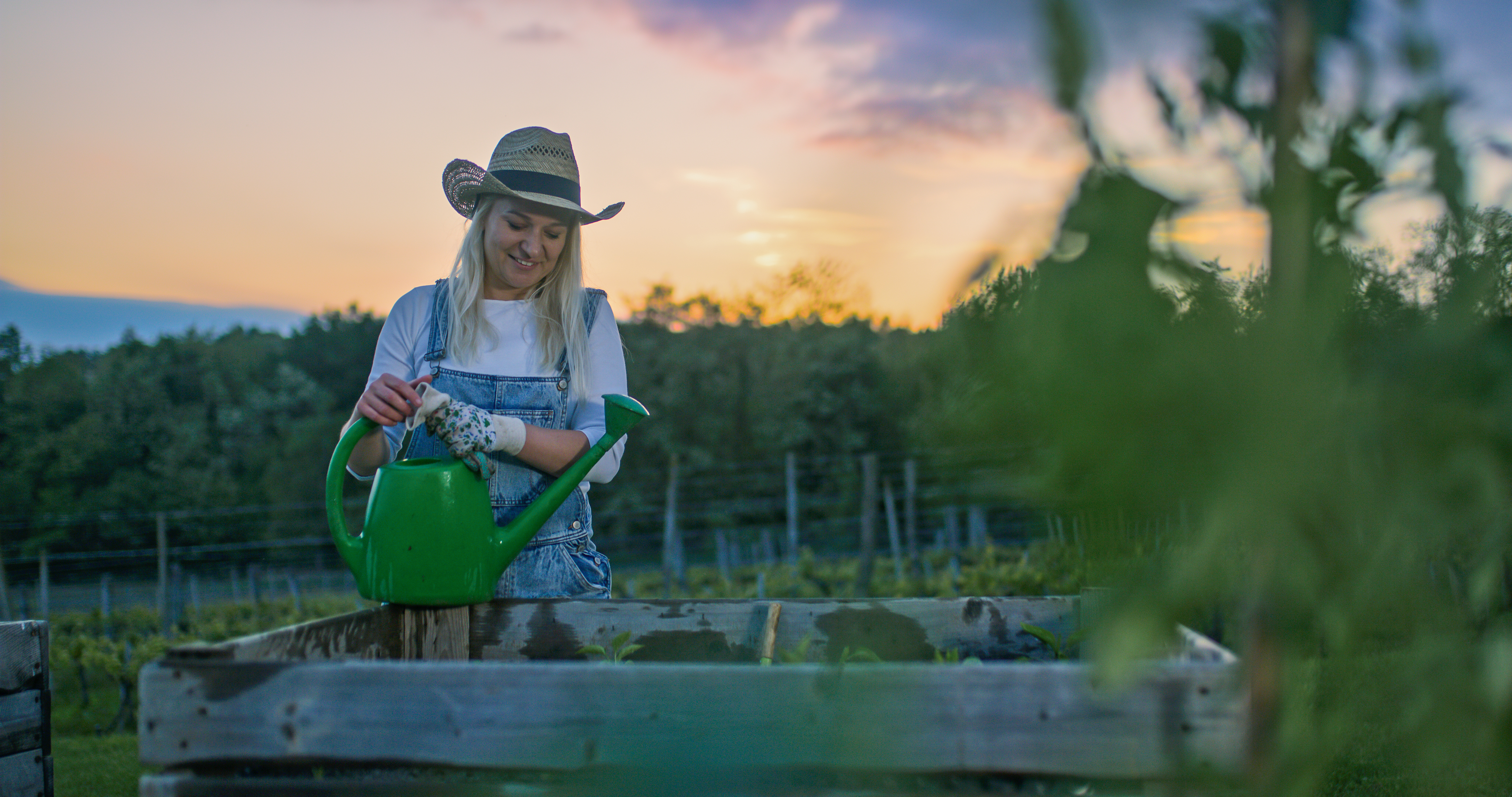
It’s best to water your garden in the cool of the evening or first thing in the morning if possible. Watering in the heat of the day is wasteful due to evaporation. When the sun is at its hottest around midday a significant amount of water will be lost to the air, before it can soak into the soil where it can be absorbed by the roots of your plants.
So get up early to water or wait until later in the evening when the sun has gone down. Watering in full sun can even harm your precious plants in some cases. Because the drops of water act like magnifying glasses and scorch the leaves.
There's more tips on watering plants in our guide.
2. Install a water butt
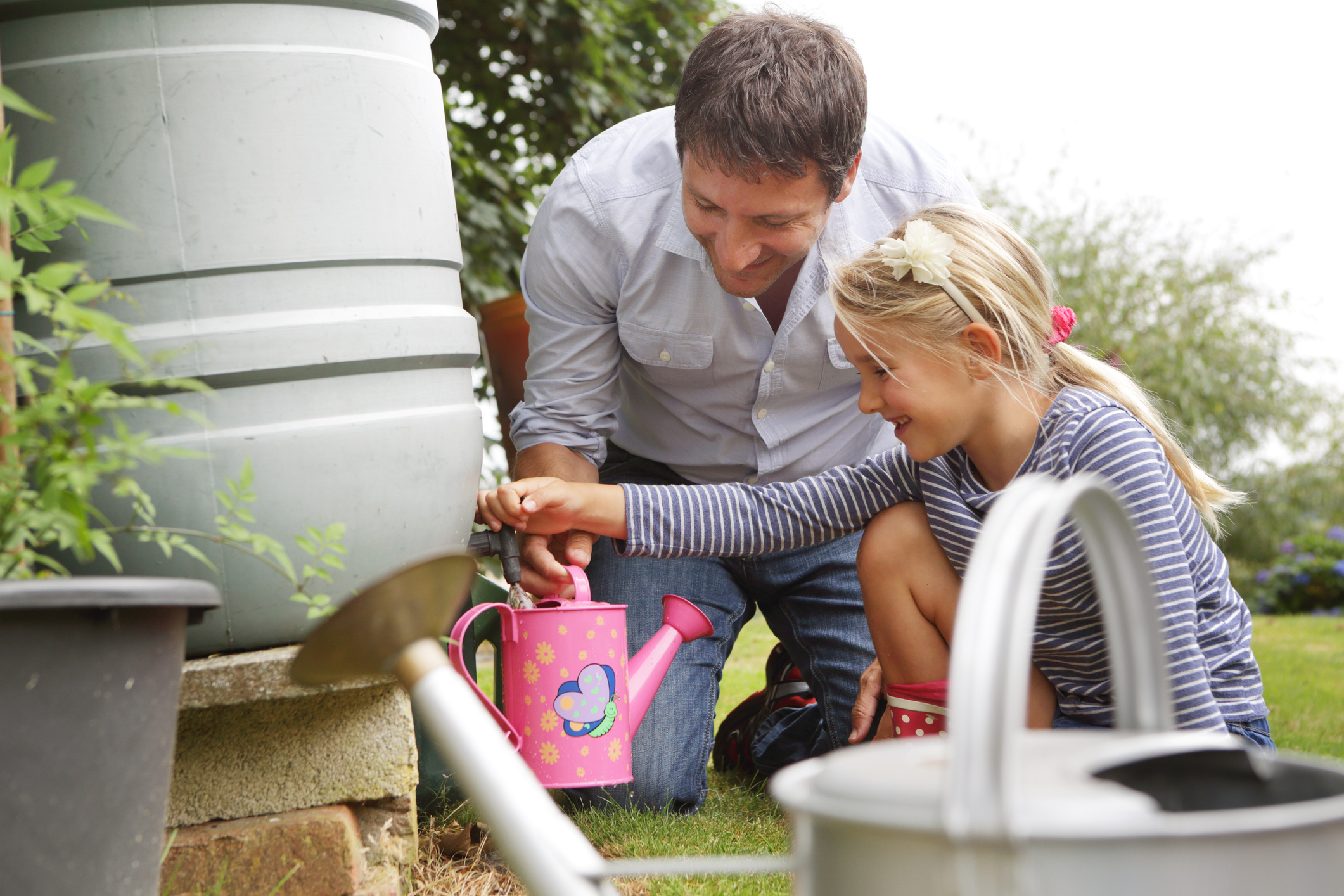
Installing at least one water butt to collect rainwater is a good start to a well-watered garden and perfect if you want to create an eco friendly garden. It is easy to do, and if your water is on a meter it will save you a substantial sum. Butts come in a variety of sizes, from slimline 100-litre ones to rotund 2,000-litre containers and even reservoir tanks that can be buried in the ground.
If you have the room, attach them to drainpipes on the house, garage, shed and greenhouse near where to your plants are growing. In this way you will maximise your collecting potential and won’t have to haul the full cans too far around the garden when doing the watering.
3. Leave your lawn clippings
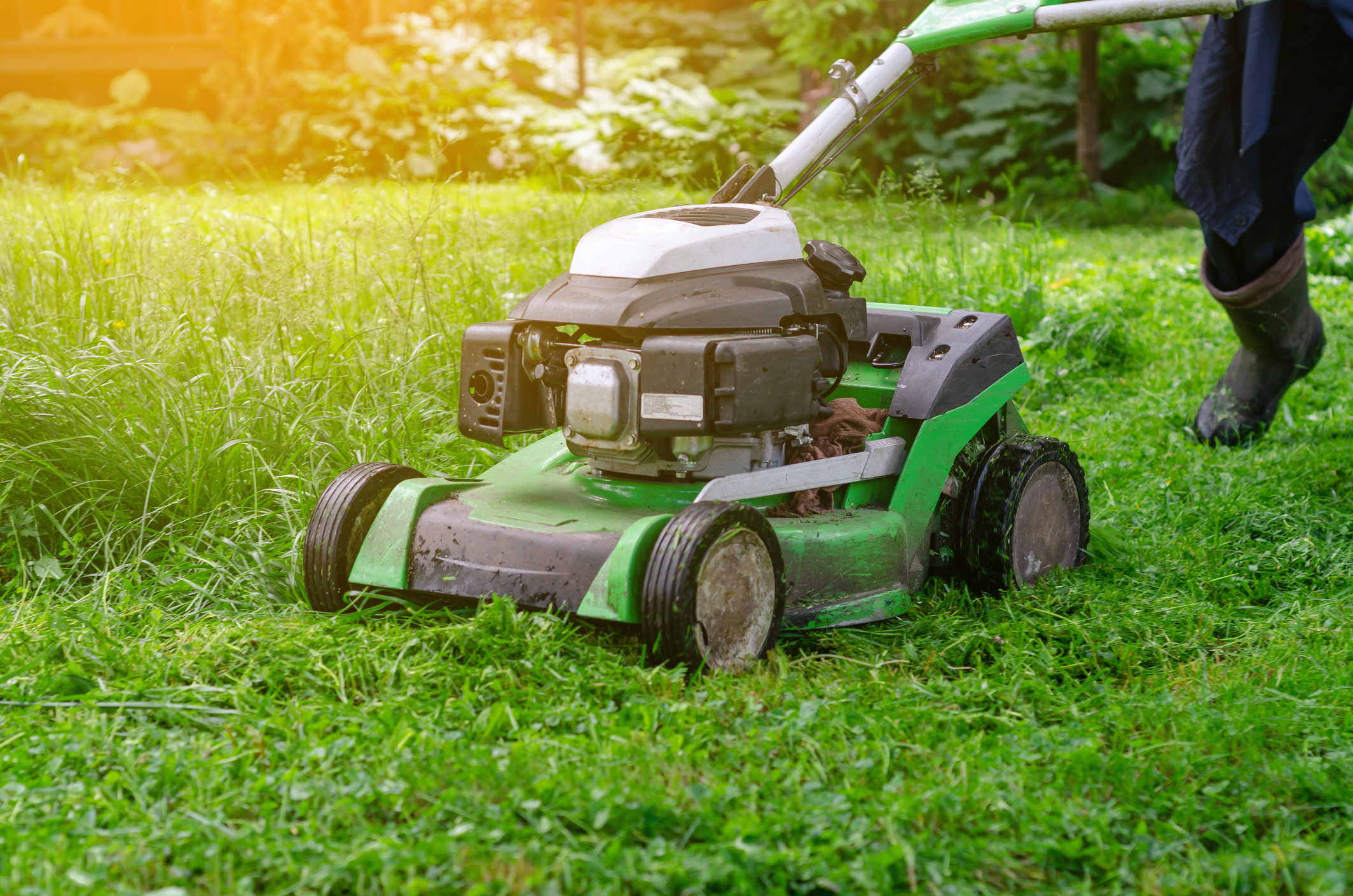
Lawns are super thirsty, so to give your grass the best chance of survival, when you're using the best lawn mower set the blades high because long grass traps dew, providing useful moisture for the roots.
Leave the clippings on the lawn to provide shade, keep the roots cool and slow down evaporation, but be aware that you will have to give the lawn a good raking in the autumn to get rid of the build-up, or ‘thatch’.
4. Mulch your borders
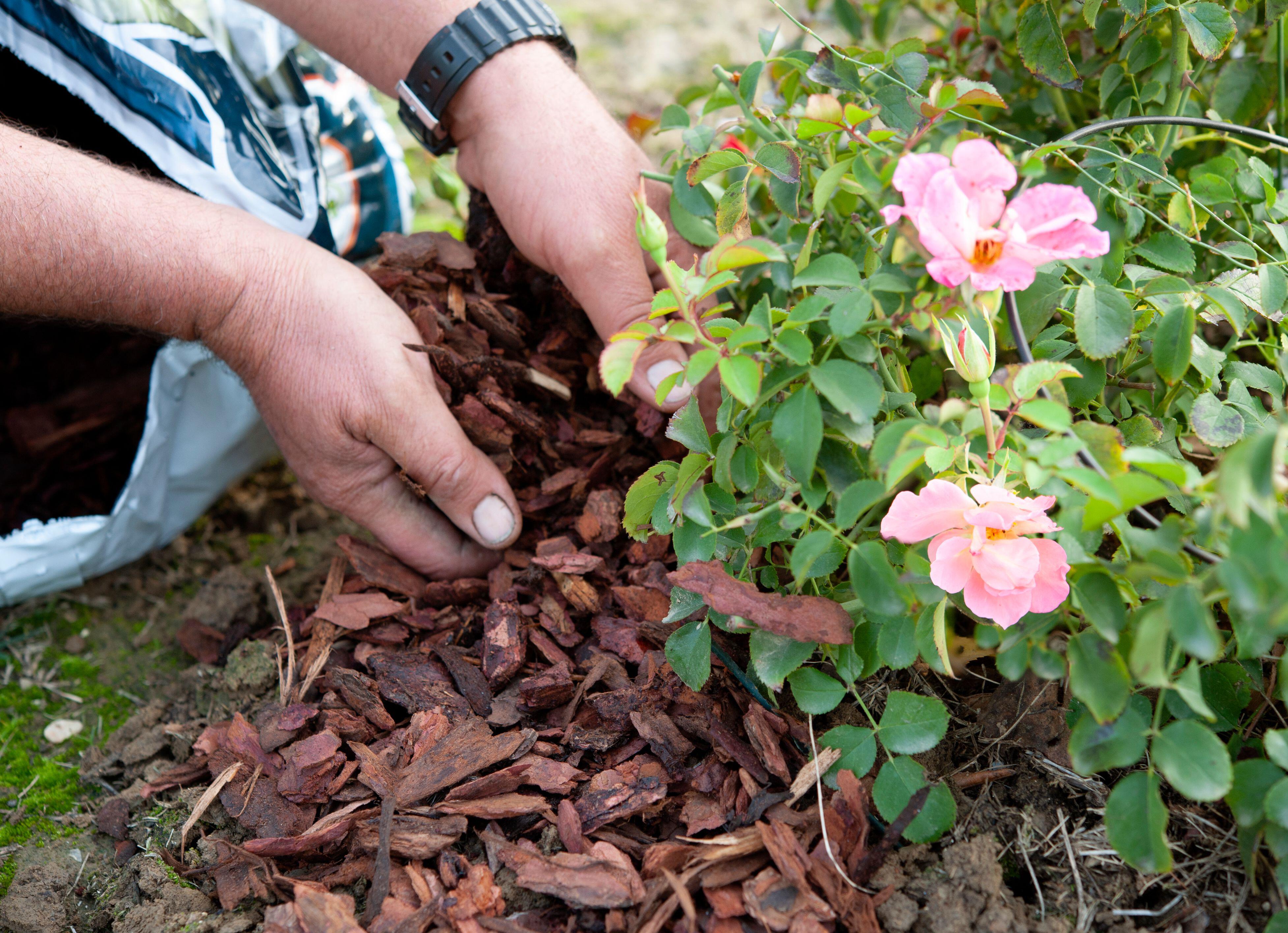
Putting down a 3-10cm-deep layer of mulch through your borders and between crops on the veg plot is one of our top garden water saving tips. It helps the soil retain moisture, keeping roots moist and limiting the amount of evaporation.
You can use bark, although light-coloured gravel will absorb less heat than dark mulches, or beat the budget by recycling your lawn clippings. Make sure the grass is dry before you apply it and that the lawn has not been sprayed with weed killer or other chemicals.
There's more advice on mulching in our expert guide.
5. Nourish your soil
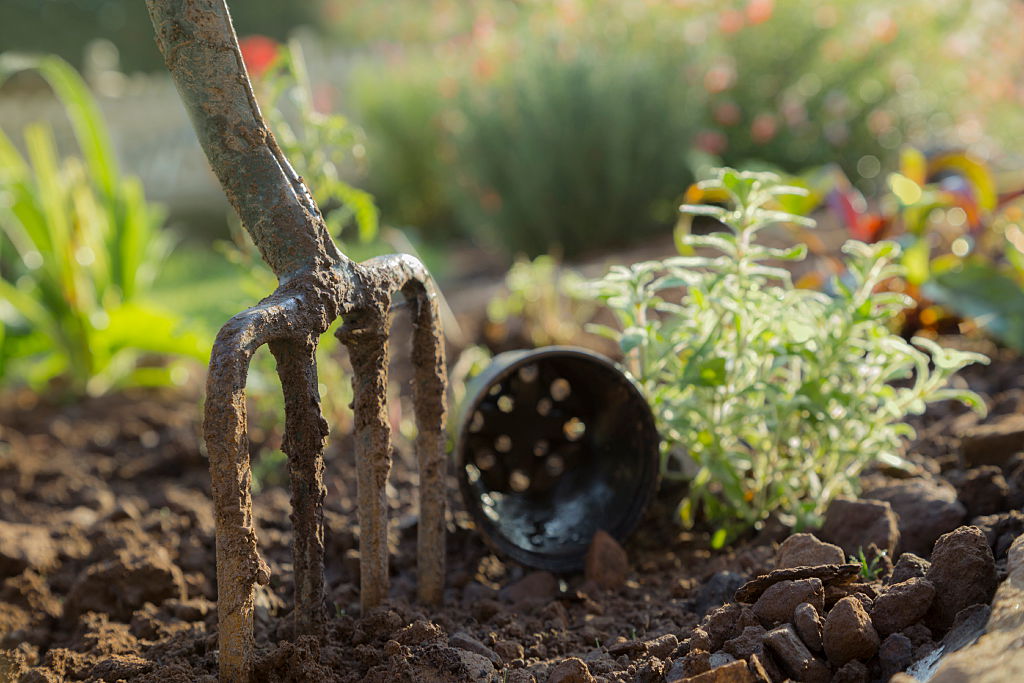
In gardens where the soil is well-nourished and routinely cultivated, you may only need to dig, or even push your fork deep into the soil and give it a wiggle around to find it is dangerously dry at root level.
The only way to fix dry soil is to dig in plenty of organic matter, which can be well-rotted garden compost made from leaves, including lawn clippings or animal manure. These natural ingredients will not only enrich the soil but also make it more absorbent and able to retain moisture during dry times.
Find out expert tips on how to compost in our guide.
6. Use water retaining crystals
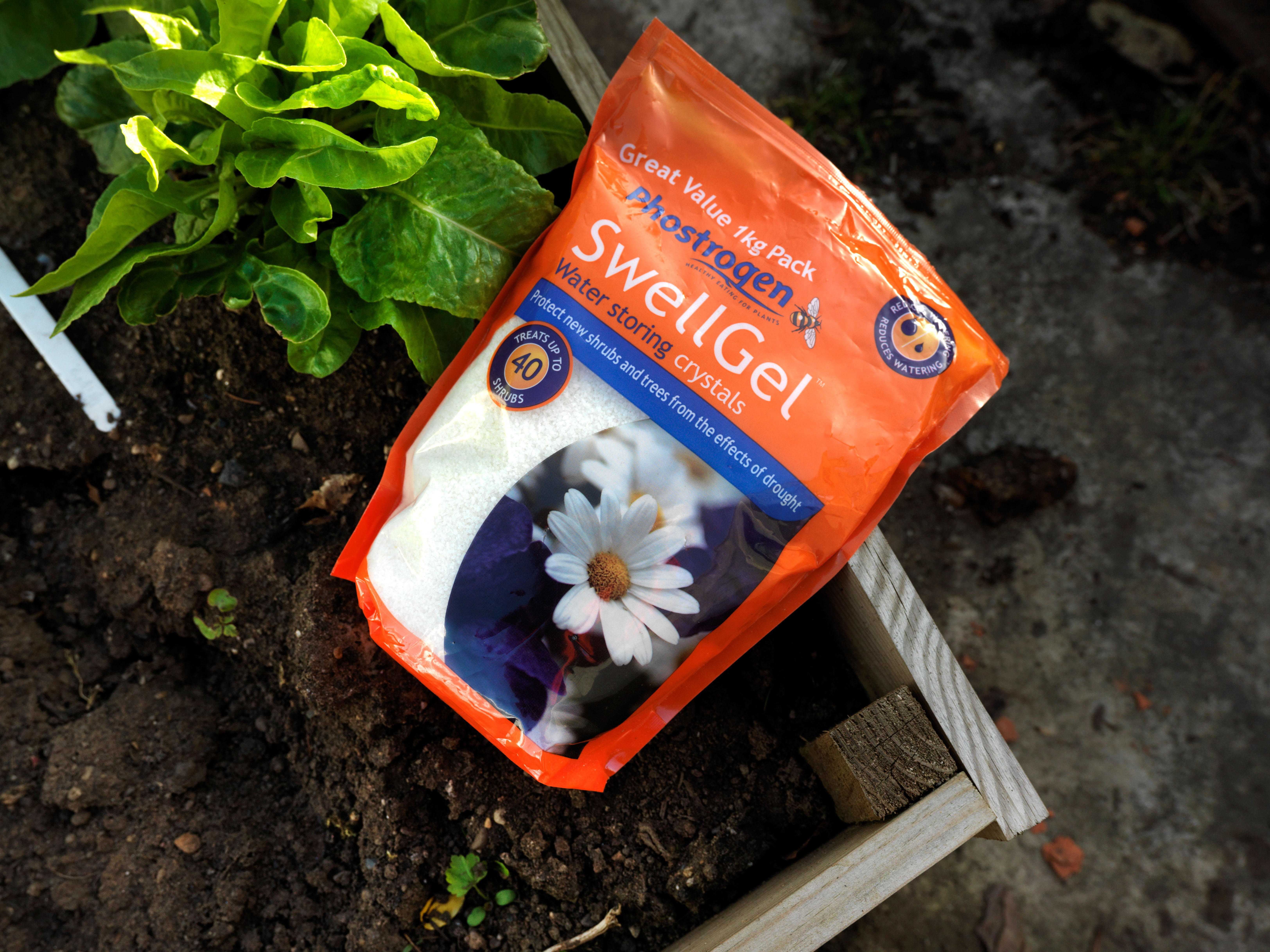
Mix water-retaining crystals into potting compost for more garden water saving tips. These are absorbent polymers that act like tiny sponges turning to a gel consistency as they hydrate. You can also use in soil when planting shrubs and perennials, as these will absorb and store up to 400 times their own weight in water, ready to release it when plants need it.
7. Stop water run-off
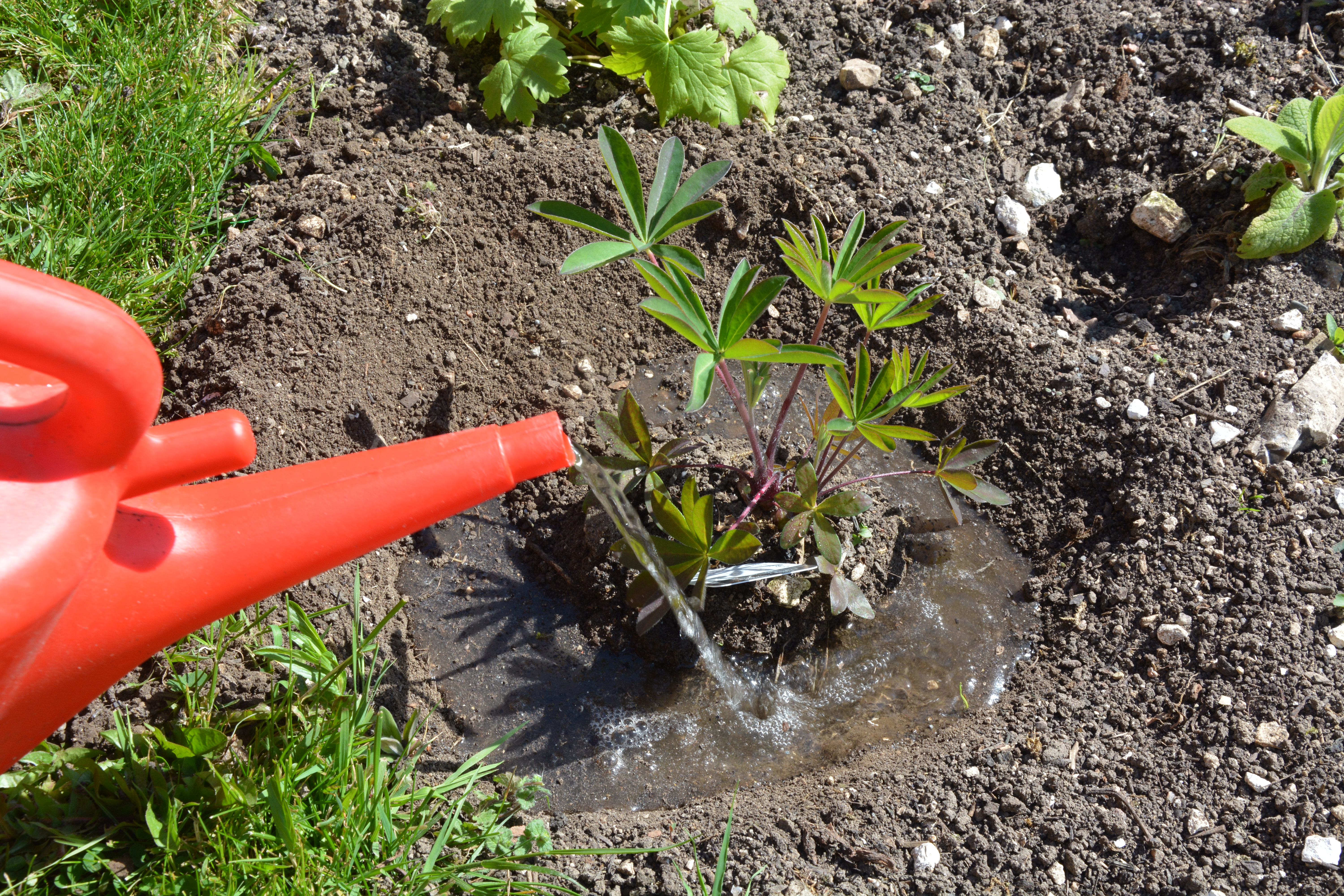
Stop water running off very dry soil by building a ‘moat’ around plants. This will keep the water from being stolen away by weeds. Weeds are generally more aggressive and prolific than cultivated plants and will steal water and nutrients, so give your plants a fighting chance by following our weed control tips and tricks.
8. Save water from the kitchen
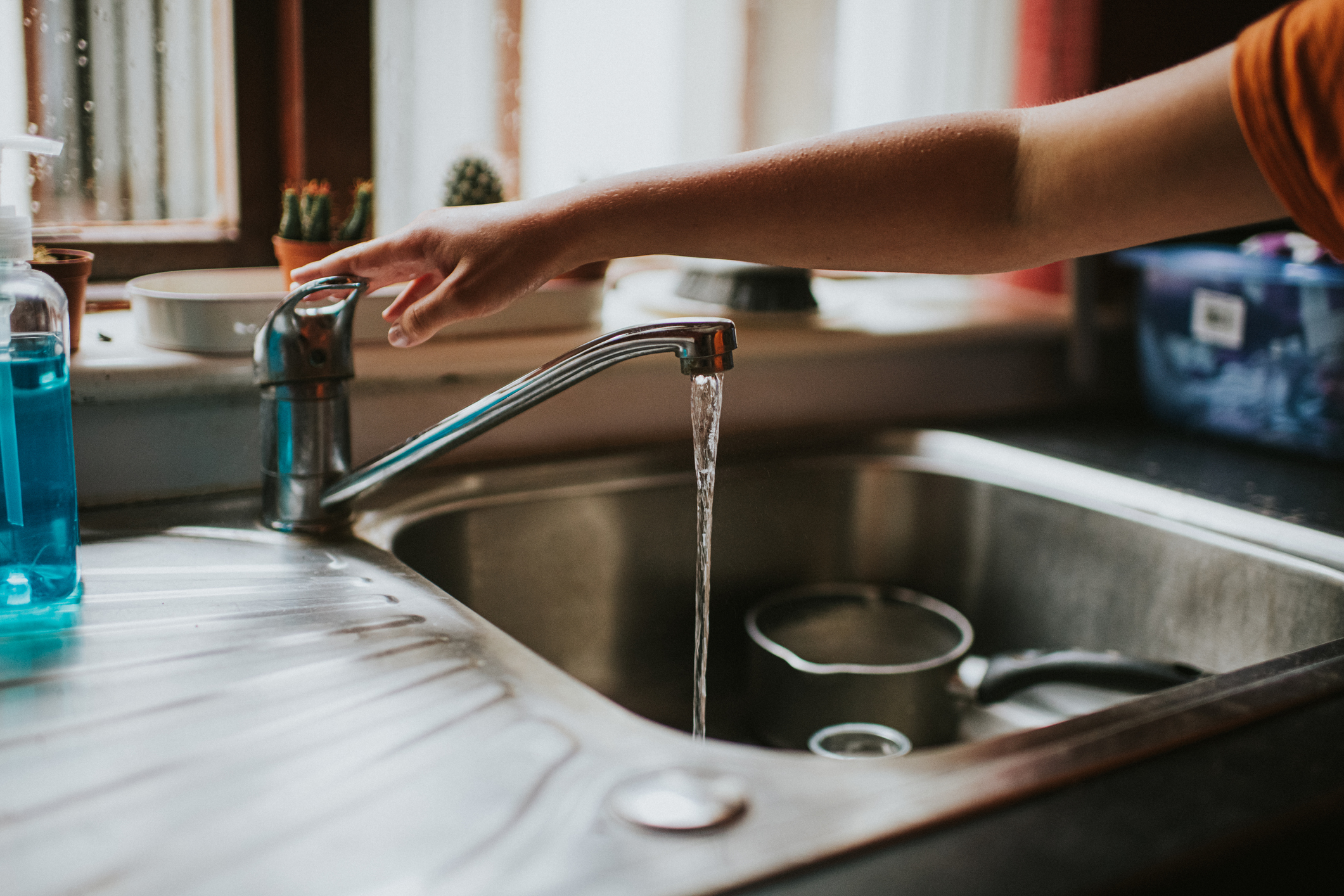
This is one of those garden water saving tips that you might not have thought of trying before. Some gardeners use ‘grey’ water left over from washing the dishes and hand-washing. As long as it isn’t too contaminated with food scraps and grease, and doesn’t contain bleach, it is safe to use on plants.
The same applies for water used for cooking pasta, vegetables and eggs. Another top tip is saving the water that runs as the hot tap heats up.
9. Grow succulents for an on-trend look
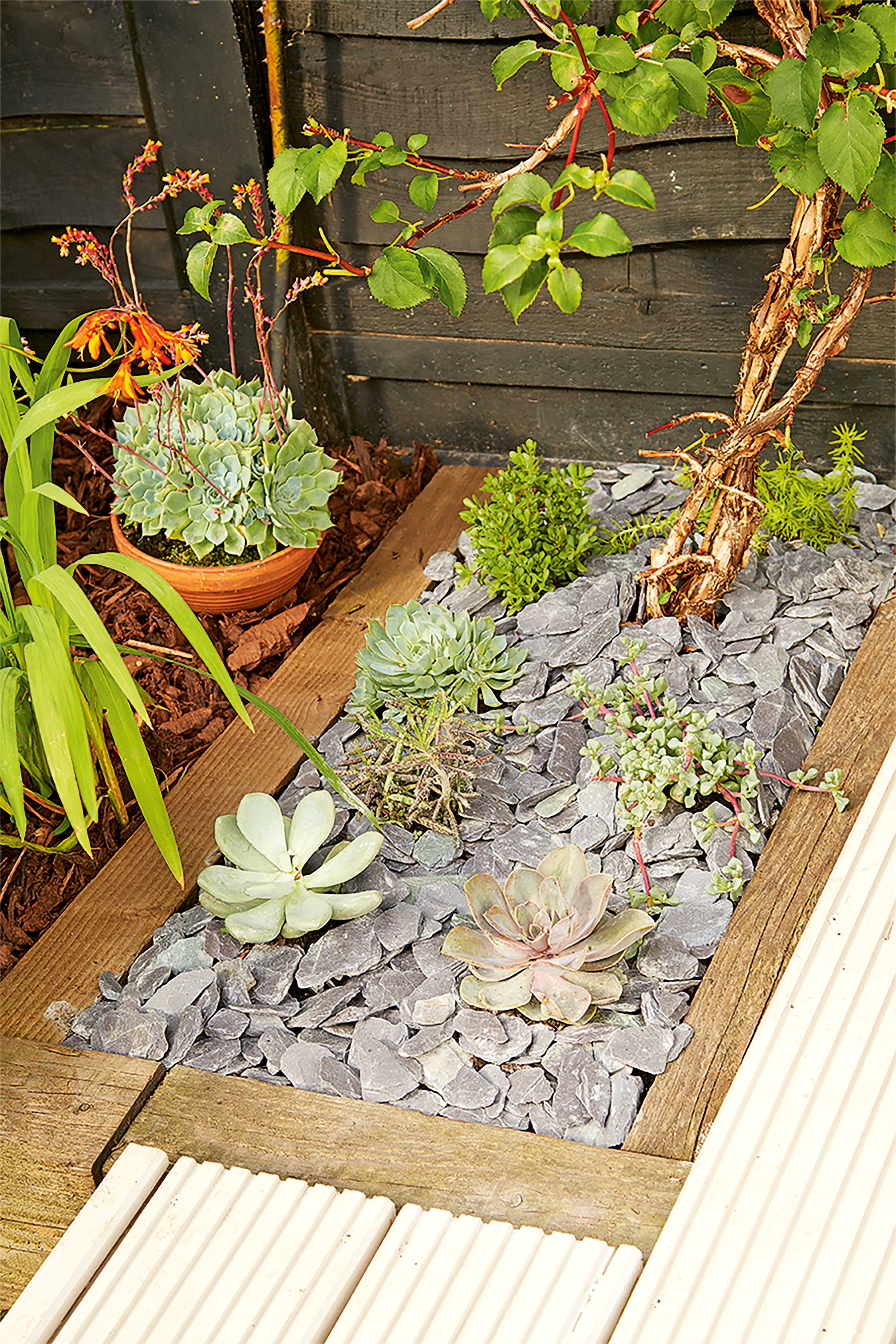
Forget summer bedding, as it will run to seed quickly when starved of water. Instead grow trendy succulents such as houseleeks, or sempervivums, and the black tree aeonium known as Schwarzkopf in pots on the patio.
Fleshy-leaved agaves, with their huge rosettes of strappy leaves, will look amazing in contemporary gardens and are perfect for creating a desert, Mediterranean or Mexican feel on the patio. They thrive on neglect and are the perfect choice for busy gardeners.
There's more tips in our guide on how to grow succulents both indoors and out.
10. Cut your losses
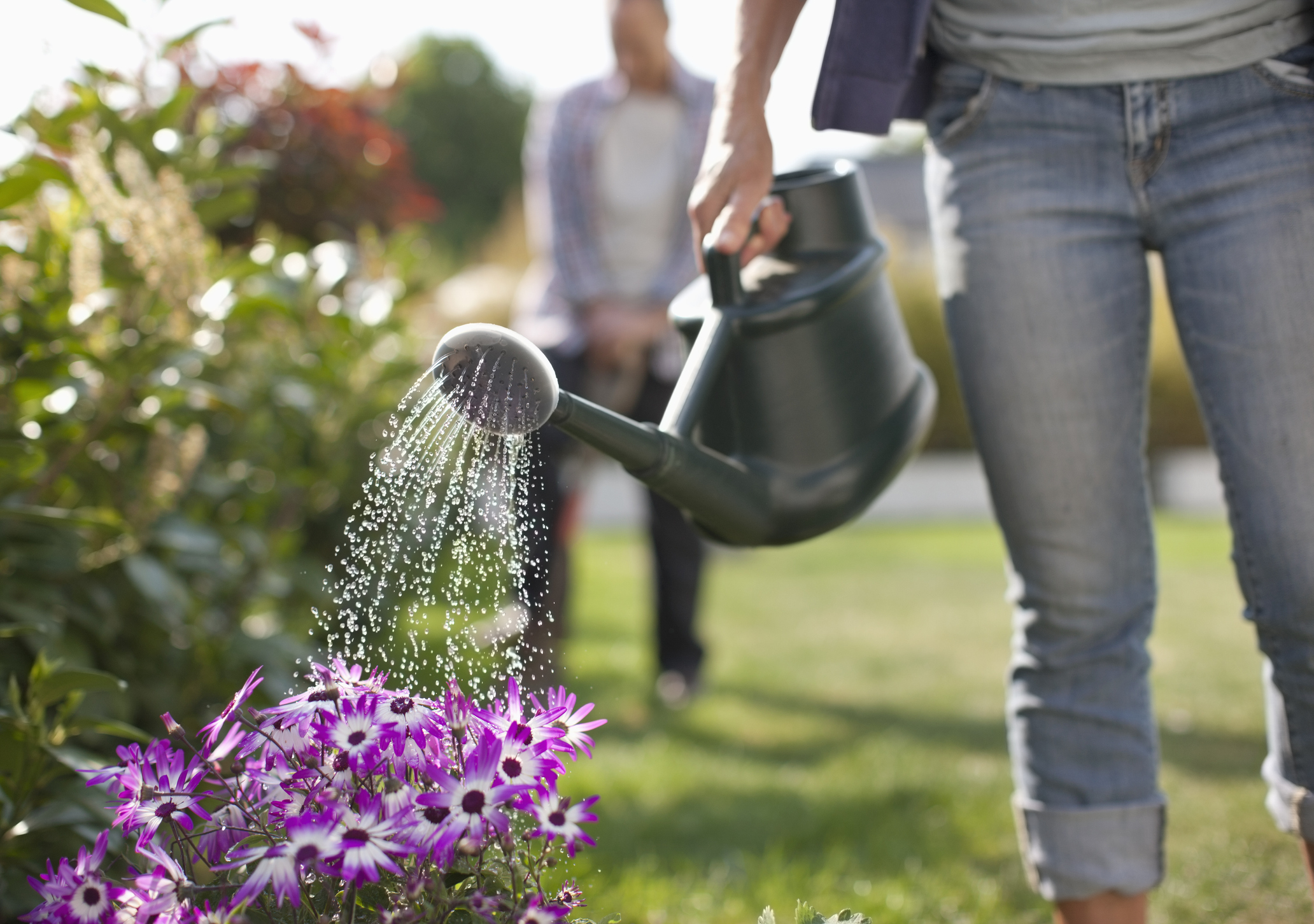
Don’t waste water on sickly plant specimens. Save water for the survivors and don’t worry about established trees and mature shrubs as they’re virtually drought-proof!
During a drought using sprinklers and hoses is frowned upon if not banned, so opt instead for seep hoses, which can be rigged up to rain barrels that have been installed to collect both rainfall and grey water recycled from baths, sinks and washing machines.
11. Use the correct kit
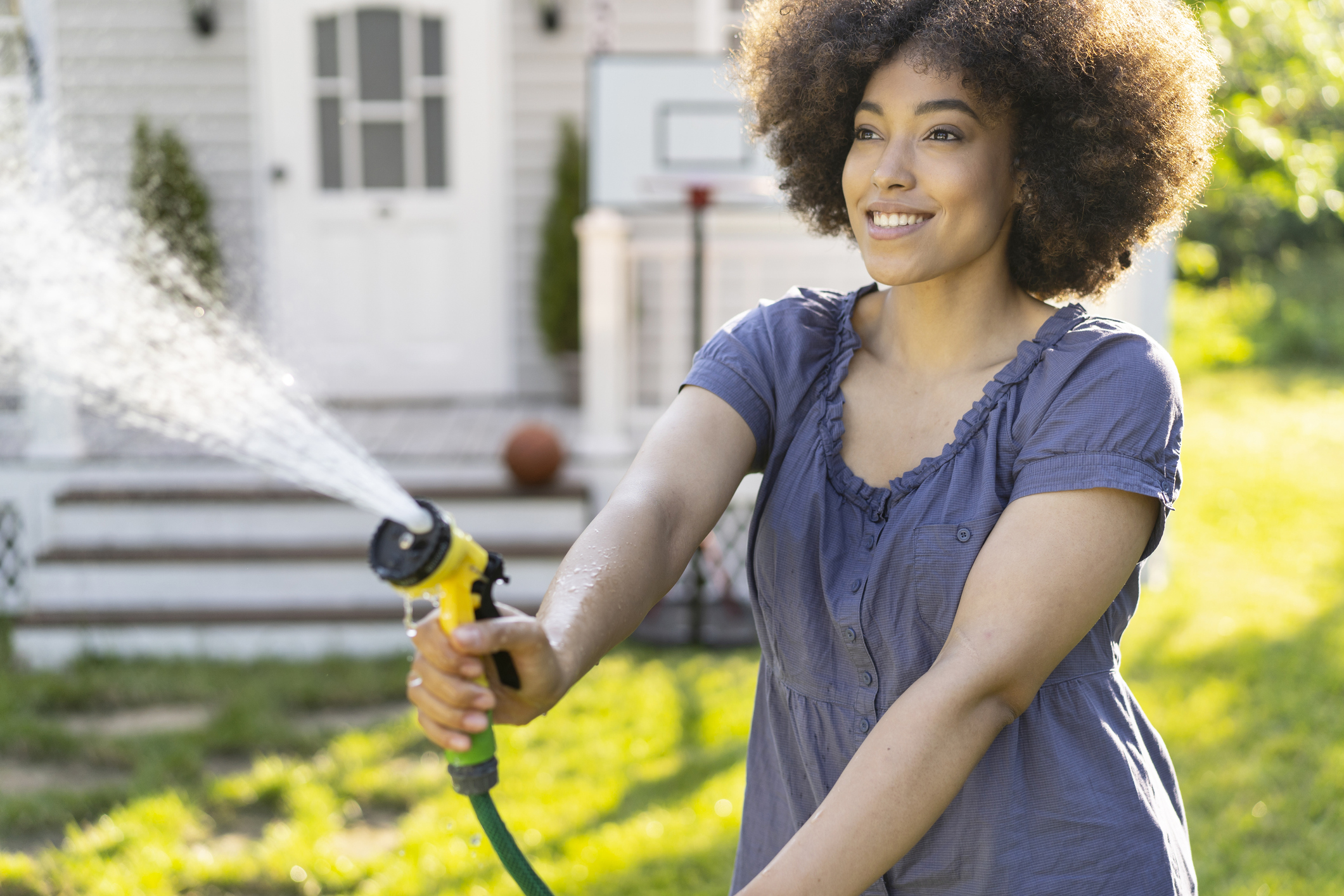
Using a watering can with a rose sprinkler head will help control the flow of water better and stop you flooding plants which only need a lighter sprinkling.
Watering cans filled up from a water butt are preferable to hoses when it comes to saving water. But if you must use a hose ensure that there are no leaks. Often these can occur at the point they sit on the water tap. Ensuring it is firmly fixed on will prevent precious water being lost to unnecessary leaks. You'll find tips on how to repair a garden hose in our guide.
Use a multi spray head which controls the flow of water and will only allow water out when in use. Without a proper nozzle, water can escape from when you've switched your tap on to the time you've reached the area you need to water. Find the best garden hose for the job in our buying guide.

Teresa has worked as an Editor on a number of gardening magazines for three years now. So she is lucky enough to see and write about gardening across all sizes, budgets and abilities. She recently moved into her first home and the garden is a real project! Currently she is relishing planning her own design and planting schemes. What she is most passionate about when it comes to gardening are the positive effects it has on our mental health to grow and care for plants, as well as being great for the environment too and help provide food and shelter for wildlife.
